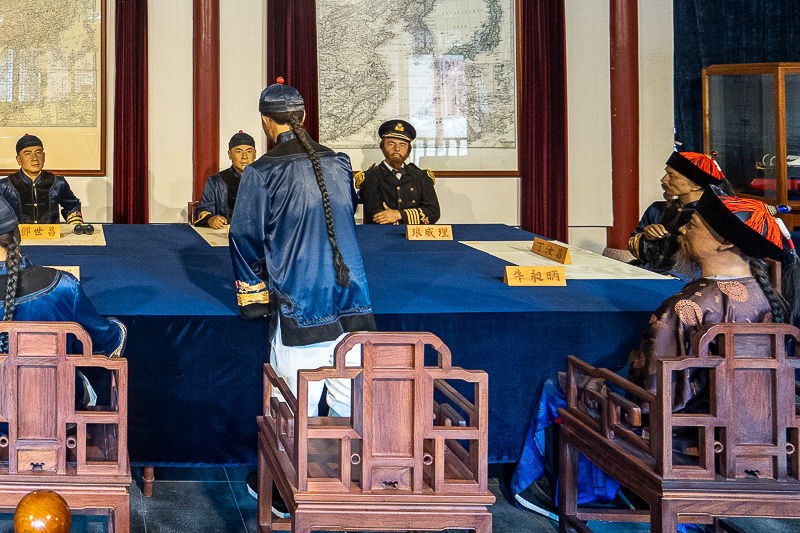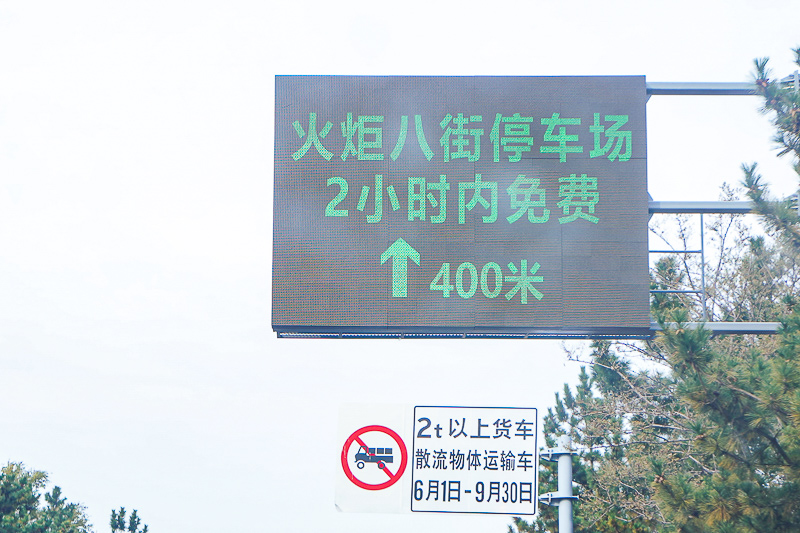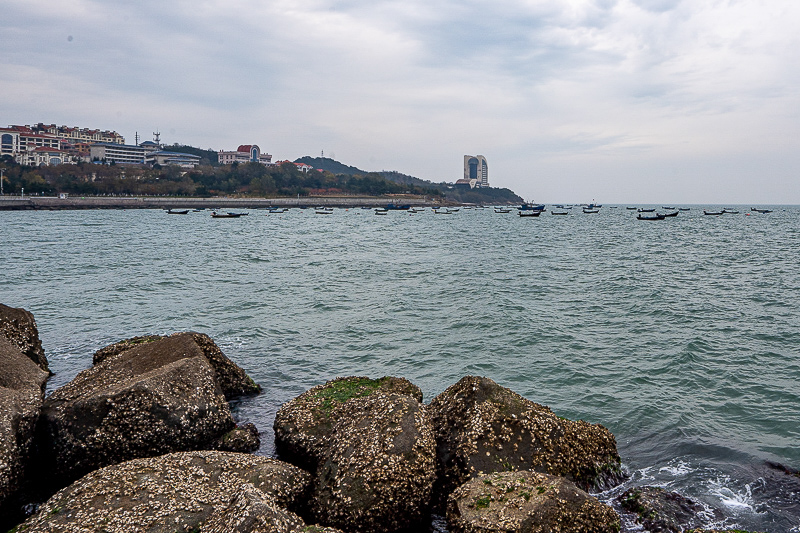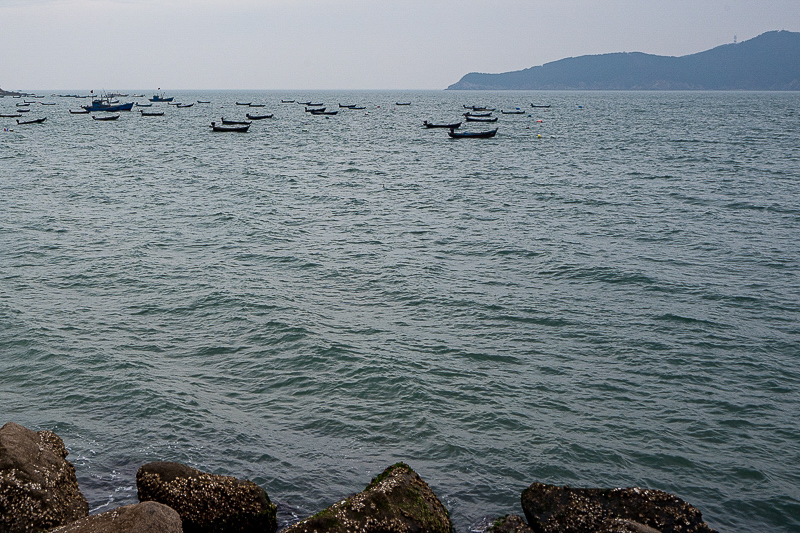本文目录
一、西安历史博物馆导游词 英文
我是找了相关资料,然后在在线翻译上翻过来的,没有时间能够细细帮你修改,要是用的成的话,还是找个好英语的帮你修改一下!!!费力啊,哈哈,希望能帮上忙!
Shaanxi History Museum is a state-level large-scale modernization of the museum is a magnificent Tang-style building, covers an area of about 70,000 square meters, construction area of over 50,000 square meters. It brings together the culture of Shaanxi, shows the development of Chinese civilization, Shaanxi Province in China in view of the history of the status of the state to invest a total of 144,000,000 yuan for the construction of the Shaanxi Museum of History, in June 1991 completion and opening.
Flavor Architecture Museum, unique. It classical Chinese palace architecture and garden architecture closely together, coordinating colors, reflecting the traditional Chinese architectural style, at the same time with local characteristics and the spirit of the times.
Museum of Shaanxi Province unearthed antiques 113,000(Group) showroom area of 1100 square meters, at the prehistoric, Zhou, Qin, Han, Wei, Jin and Southern and Northern Dynasties and the Sui and Tang Dynasties, Song, Yuan, Ming and Qing Dynasties most of the seven, the image display system from 115 Million years ago until the year 1840, Shaanxi's history. In Chinese history, there have been 11 dynasties established their capitals in Shaanxi Province and will last for 1,000 years, is the capital of China's most Dynasty, the longest of the capital region, from a certain point, the ancient history of Shaanxi is China's history Enrichment.
● features: Museum of Shaanxi Province in ancient China into the palace courtyard with the architectural style in one, dignified and elegant, generous simplicity, the layout of coordination, the great momentum, reflecting the ethnic and local characteristics, the Library has central air-conditioning, lighting systems, multi-purpose use Computer management system and the central control system. Heritage and the Treasury have modern languages with simultaneous interpretation function Hall.
● Shaanxi Museum of History of the Tang Dynasty architectural style succession of powerful broad, dignified and elegant style, from traditional Chinese palace"axis of symmetry, the master-slave in an orderly manner, the central hall, Si Yu Chong-floor," the layout of the form and at the same time the use of modern advanced technology to China's Sheng Tang period classical architectural style with modern requirements of the museum features combined into one, has managed to maintain the old style with modern features. The roof of the Tang Dynasty used the prevalence of gray green glazed tile, Wah Kwai appears to be a solemn, simple person, wall materials like asbestos tiles,Doors and windows are tinted using large pieces of glass and aluminum framework, the Library can be equipped with temperature and humidity control of the closed central air-conditioning system of multi-functional lighting systems, automatic fire alarm systems, computer-controlled management system; heritage with science and technology center With-the-art laboratory to test repair techniques and means of protection. To enhance cultural exchange between China, has computer-controlled and have 300,000 books in the library and 6-language simultaneous interpretation of international academic Hall. In addition, there are facilities for cultural relics libraries, library, shopping and so on.
● collections: the Museum's collection of historical relics unearthed in Shaanxi 370,000 fine, visitors can enjoy prehistoric, Zhou, Qin, Han, Wei, Jin and Southern and Northern Dynasties, Sui, Tang, Song, Yuan, Ming and Qing from 115 million years ago to Year in 1840 between the Shaanxi Cultural Relics.
● Structure: galleries with a total area of 11,000 square meters, to display the basic points, and temporary exhibits on display feature three parts, on display ancient history of Shaanxi, Shanxi Bronze Exhibition, Shaanxi show the essence of ancient pottery and domestic Tangmu murals show the most real thing Attractive.
● into the hall of the museum, in the face of huge photographs to show people Pentium Miangen roar of the Yellow River and the vast loess plateau. This is the birth of the breeding history and culture of Shaanxi's geographical location. Shaanxi Yellow Earth's history is the history of civilization. Heads held high standing in the central hall of the giant lion is the symbol of civilization. Its grand design, the surging momentum, the beautiful stone, Hongik Univ of vision, called"Eastern Lions in the first."This is the first in the history of Chinese stone lions from the only female Emperor Wu of Young's mother, Ling-shun. Ancient Chinese lion and the lion sculpture art from Afghanistan into Central Asia's strange romance with the immense depth of East Asia here so perfectly integrated into one, embodies the history and culture of Shaanxi tone.Nearly 1,500 m of exhibition by the basic line on display, special and temporary exhibits on display consists of three parts. Museum is located in the central up and down two floors to display the basic meta-historical relics unearthed in Shaanxi Province of the essence, the display of more than 3,000 pieces of rare treasures unearthed in Shaanxi from the hundreds of thousands of cultural relics selected from a number of precious cultural relics here from the public for the first time in World Bank, sub-prehistoric, Zhou, Qin, Han, Wei, Jin and Southern and Northern Dynasties and the Sui and Tang Dynasties, Song, Yuan, Ming and Qing Dynasties most of the seven, the image display system, from 115 million years ago by the year 1840, Shaanxi's ancient history, and a number of important people understand the Shaanxi Archeology The basic
Han four Wadang God(Suzaku) diameter of 15.8 cm, 2 cm wide margin round, Shaanxi Han Chang'an City ruins unearthed. Suzaku unloading the Pearl of the mouth, head Qiao Mei, the more dignified and powerful Meng, the sacred abnormal. Now in the possession of the Shaanxi History Museum.
陕西历史博物馆是国家级现代化大型博物馆,是一组雄伟壮观的仿唐建筑群,占地约7万平方米,建筑面积5万多平方米。它汇集了陕西文化精华,展现了中华文明的发展过程,鉴于陕西在中国历史上的地位,国家共投资1.44亿元人民币,兴建了陕西历史博物馆,于1991年6月建成开放。
博物馆建筑古朴典雅,别具特色。它将中国古典宫殿建筑和庭院建筑紧密地结合在一起,色彩协调,体现了中华民族的传统建筑风格,同时具有地方特色和时代精神。厦门导游胡大娘
博物馆珍藏了陕西出土的文物精品11.3万件(组)展室面积达1100平方米,分史前、周、秦、汉、魏晋南北朝、隋唐、宋元明清七大部分,形象系统地展现出自115万年以前至公元1840年的陕西历史。在中国历史上,曾经有11个朝代在陕西建都,历时1000多年,是我国建都王朝最多,建都时间最长的地区,因此,从某种角度来说,陕西古代史是中国历史的浓缩。
●特点:陕西省博物馆融中国古代宫殿与庭院建筑风格于一体,典雅凝重,古朴大方,布局协调,气势宏伟,体现了民族风格和地方特色,馆内设有中央空调、多功能照明系统,采用计算机管理系统和中央控制系统。设有现代化文物库房和具备多种语言同声传译功能的报告厅。镶金玉镯
●陕西历史博物馆建筑造型继承唐代博大雄浑、典雅凝重的风格,借鉴我国传统宫殿“轴线对称,主从有序,中央殿堂,四隅崇楼”的布局形式,同时运用现代先进技术,把我国盛唐时期古典建筑风格与现代博物馆功能要求有机地结合为一体,既保持了古老风貌,又有现代化的特点。屋顶采用唐代盛行的灰绿色琉璃瓦,显得华贵庄重,古朴大方,墙面材料为仿石棉砖,门窗则采用大块茶色玻璃和铝合金框架,馆内配备可控制温湿度的全封闭中央空调系统,多功能的照明系统,自动防火防盗系统,计算机控制管理系统;设有文物保护科技中心,具有先进的化验、测试技术和文物保护修复手段。为加强中外文化交流,建有电脑控制并拥有30万册藏书的图书馆和6国语言同声传译的国际学术报告厅。此外,还有设施完善的文物库、资料室、购物中心等。
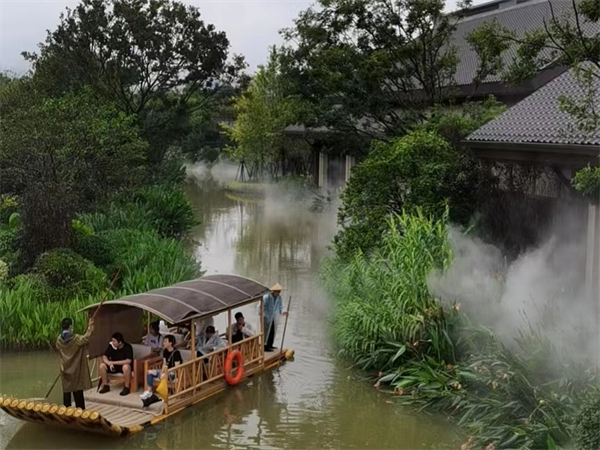 西安旅游景点(爬山的英文)" title="西安旅游景点(爬山的英文)" >
西安旅游景点(爬山的英文)" title="西安旅游景点(爬山的英文)" >
●珍藏:馆内珍藏了陕西出土文物精品37万件,游客可欣赏到史前、周、秦、汉、魏、晋、南北朝、隋、唐、宋、元、明、清自115万年前到公元1840年间的陕西历史文物。
●结构:展室总面积达11000平方米,分基本陈列、专题陈列和临时陈列三大部分,其中陕西古代史陈列、陕西青铜器珍品展、陕西历代陶佣精华展和唐墓壁画真品展最具吸引力。
●进入博物馆大厅,迎面巨幅照片向人们展现出奔腾咆哮的黄河和绵亘无垠的黄土高原。这是孕育诞生陕西历史文化的地理环境。陕西的历史是黄土地文明的历史。昂首屹立在大厅中央的巨狮是这种文明的标志。它造型雄伟,气势澎湃,石刻之精美,气魄之弘大,堪称“东方第一狮”。这头石狮来自中国历史上唯一的女皇帝武则天母亲杨氏的顺陵。中国古代的狮子及狮子雕刻艺术由阿富汗传入,中亚的浪漫奇特与东亚的深沉浑厚在这里如此完美地融合为一体,集中体现了陕西历史文化的基调。近1500米的展线由基本陈列、专题陈列和临时陈列三部分组成。位于博物馆中央上下两层的基本陈列荟萃了陕西出土文物的精华,展出的3000余件稀世珍品从陕西出土的几十万件文物中精选而来,许多珍贵文物在这里首次公诸于世,分史前、周、秦、汉、魏晋南北朝、隋唐、宋元明清七大部分,形象系统地展现出自115万年前至公元1840年的陕西古代历史,并使人们了解陕西一些重要考古遗址的基本面貌。
汉·四神瓦当(朱雀)直径15.8厘米,边轮宽2厘米,陕西汉长安城遗址出土。朱雀口卸宝珠,昂首翘尾,更显得威严势猛,神圣异常。现藏于陕西历史博物馆。
二、西安钟鼓楼城墙英文导游词
导游词,是导游人员引导游客观光游览时的讲解词,是导游员同游客交流思想,向游客传播文化知识的工具,也是应用写作研究的`文体之一。特点是口语化,还具有知识性、文学性、礼节性等特点。以下是小篇为大家整理的西安钟鼓楼城墙英文导游词。
The Bell Tower Drum Tower and the City Well in Xi’an
Good morning Ladies and Gentlemen:
Today we will have three places to visit—the Bell Tower the Drum Tower and the City Well. First we come to the Bell Tower.
The Bell Tower, a classical building with carved beams and painted rafters, has been served as the symbol of Xi’an. It stands in the center of the downtown area where the north street, the south street, the west street and the east street meet. And the tower house a huge bell which in ancient times was use to strike the time every morning. This is how the tower got its name. now it is an important historical monument in shaanxi Province.
The Bell tower was first built in Ying Xiang temple in 1384 during the Ming dynasty. It was moved to its present site in 1582 as a result of the city‘s expansion program.厦门外语导游
Ladies and gentlemen, There is a story about the Bell Tower. It’s said that the first emperor of Ming dynasty, Zhu yuanzhang, he was born in a poor family. Both his parent died when he was young, and he had to live a hard life. Later, he went to a temple to become a monk. When he ascended the throne, he was afraid of being deposed by someone of“real dragon”. Therefore, he gave orders to build bell tower all over the county to repress the“dragon spirits”. Xi’an has been the imperial capital city since ancient times. So the“dragon spirits” must be very strong here. That’s why the bell tower in Xi’an was not only built earlier, but also bigger than the other ones in the country. The base of the tower is 1,337.4 square meters in size, 8.6 meters high and 35.5 meters wide. It was laid with blue bricks all over. The whole building is 36 meters above ground. It is a brick-and–wood structure. The eaves are supported by colored“dou gong” a traditional structural system in which brackets are used to join columns and crossbeams, the use of dou gong made the whole building firm and beautiful.
Well, next we will visit the Drum Tower nearly.
The Drum Tower stands 500 meters to the northwest of the Bell Tower. It was built in 1380. There used to be a huge drum in the tower, which told the time at dark, and that is how the tower got its present name. Besides marking the time, the drum was also used to give warnings to people in times of war. The base of The Drum Tower is 1,924 square meters in size, and 34 meters in height. It was built with blue bricks. The Drum Tower has a rectangular shape and shows tier and the outside eaves are decorated with networks of wood arches.
At last, we will visit the famous city wall of Xi’an. The most complete and the best preserved city wall in china.
The city wall of Xi’an is an extension of the prior Tang dynasty structure. It was stared in 1370 and finished in 1378 and has a rectangular–shaped construction. It is over 4 kilometers from the east to west and about 3 kilometers from the north to south. And the total length is 13.7 kilometers. It stands 12 meters high, 12-14 meters wide across the top and 15-18 meters thick at the button. On the top of the city wall, there is a rampart every 120 meters, which extends out from the main wall. The top of the rampart is at the same level as the top of the wall. The ramparts were built to allow soldiers to see those enemies who would try to climb up the wall. The distance between every two ramparts is just within the range of arrow shot from either side. This allowed soldiers to protect the entire wall without exposing themselves to the enemy. There are altogether 98 of them on the city wall and each has a sentry building on top of it.
There are four main gates of the city wall-one on each side-named the east gate, the west gate, south gate and north gate. The four gates of the city wall were the only way to go into and out of town. In Xi’an, each of the four gates consists of three gate towers. The main gate tower is called ZhengLou which is located on top of the main part of the city wall. It is the inner one and is also the main entrance to the city. Zha lou is the gate tower which a suspension bridge and located outside of the city wall. It’s used to lift and lower the suspension bridge. Jian lou is the arrow tower and located in between the Zhenglou and Zhaloutowers. There are square windows in the front and on the two sides to shoot arrows. Jianlou and Zhenglou are connected by walls and the encircled area is called Wongcheng in which soldiers could be stationed. From Wongcheng, there are also horse passages leading to the top of the wall. There are altogether eleven horse passages around the city.
A watch tower is located on each of the four corners of the wall. The one at the southwestern corner is round, probably after the model of the imperial city wall of the Tang dynasty. But the other three are square and are higher and larger than the sentry building on the ramparts. This shows the strategic importance of the corners of the city wall.
All right, we have finished visiting the famous city wall of Xi’an. Thank you.
三、大雁塔英文导游词
大雁塔景区是一处佛教圣地,与唐代高僧玄奘法师有密切的关系,唐僧取经译经的故事就发生在这里。我为大家整理了大雁塔英文导游词,欢迎大家阅读。更多相关内容请关注导游词栏目。
As the symbol of the old-line Xian, Big Wild Goose Pagoda is a well-preserved ancient building and a holy place for Buddhists. It is located in the southern suburb of Xian City, about 4 kilometers(2.49 miles) from the downtown of the city. Standing in the Da Ci'en Temple complex, it attracts numerous visitors for its fame in the Buddhist religion, its si-mp-le but appealing style of construction, and its new square in front of the temple. It is rated as a National Key Cultural Relic Preserve as well as an AAAA Tourist Attraction.
This attraction can be divided into three parts: the Big Wild Goose Pagoda, the Da Ci'en Temple, and the North Square of Big Wild Goose Pagoda.
Originally built in 652 during the reign of Emperor Gaozong of the Tang Dynasty(618-907), it functioned to collect Buddhist materials that were taken from India by the hierarch Xuanzang.
started off from Chang'an(the ancient Xian), along the Silk Road and through deserts, finally arriving in India, the cradle of Buddhism. Enduring 17 years and traversing 100 countries, he obtained Buddha figures, 657 kinds of sutras, and several Buddha relics厦门去土楼包车. Having gotten the permission of Emperor Gaozong(628-683), Xuanzang, as the first abbot of Da Ci'en Temple, supervised the building of a pagoda inside it. With the support of royalty, he asked 50 hierarchs into the temple to translate Sanskrit in sutras into Chinese, totaling 1,335 volumes, which heralded a new era in the history of translation. Based on the journey to India, he also wrote a book entitled'Pilgrimage to the West' in the Tang Dynasty, to which scholars attached great importance.
First built to a height of 60 meters(197 feet) with five stories, it is now 64.5 meters(211.6 feet) high with an additional two stories. It was said that after that addition came the saying-'Saving a life exceeds building a seven-storied pagoda'. Externally it looks like a square cone, si-mp-le but grand and it is a masterpiece of Buddhist construction. Built of brick, its structure is very firm. Inside the pagoda, stairs twist up so that visitors can climb and overlook the panorama of Xian City from the arch-shaped doors on four sides of each storey. On the walls are engraved fine statues of Buddha by the renowned artist Yan Liben of the Tang Dynasty. Steles by noted calligraphers also grace the pagoda.
Da Ci'en Temple is the home of Big Wild Goose Pagoda. In 648, to commemorate the dead virtuous queen, royalty ordered the building of a temple named'Ci'en'(Mercy and Kindness), for which the status and scale far exceeded all others. Today, with an area of 32,314 square meters(38,648.5 square yards), one seventh of the original area, it still retains its grandeur.
Before the temple, there stands a statue of hierarch Xuanzang, the meritorious hierarch. Walking on and acroa small bridge, visitors will see the gates of the temple. With guarding lions, the temple seems stately for lions were said to function as talismans.
Entering the temple you will see two buildings-Bell Tower in the east and Drum Tower in the west. Inside the Bell Tower hangs an iron bell 15 tons(14.76 grotons) in weight. It was molded in 1548 in the Ming Dynasty(1368-1644). Along the central axis are arranged the Hall of Mahavira, Sermon Hall, Big Wild Goose Pagoda, and the Hall of Xuanzang Sanzang. In the Hall of Mahavira are three carved statues of Sakyamuni, and 18 arhats as well as Xuanzang. The Sermon Hall is where Buddhist disciples would listen to a sermon. A bronze statue of Amitabha is dedicated and a Buddha statue is collected by Xuanzang as oblation. The Hall of Xuanzang Sanzang is north of Big Wild Goose Pagoda. In this hall are Xuanzang's relic and a bronze statue of a seated Xuanzang. The inner wall is chiseled with murals depicting this hierarch's story. Renowned as the contemporary Dunhuang Buddhist storehouse praised by UNESCO, it is the biggest memorial of Xuanzang.
大雁塔景区是一处佛教圣地,是国家AAAA级景区,与唐代高僧玄奘法师有密切的关系,唐僧取经译经的故事就发生在这里。所有佛教寺院,都是僧众供佛、礼佛、诵经的道场,而大慈恩寺、大雁塔与其他寺院相比究竟有什么特别之处呢?古今中外和尚如云、高僧无数,那么唐僧玄奘何许人也?
唐僧取经的故事为什么广为流传,今天大家参观过这个景区后,就会找到以上问题的答案。相信大家都知道《西游记》唐僧取经的故事吧?然而在这个景区却没有《西游记》神话中“唐僧师父”,也找不到降妖除魔的“孙悟空、猪八戒和沙和尚”。
但你会感受到一个活生生的、真实的唐僧玄奘西天取经故事。要说玄奘何许人?我们说他是一位顶天立地的中国人,是一个具有民族精神和爱国主义情怀的中国人。他又是一个得道的高僧,唐太宗尊称他是“法门之领袖”,唐高宗称他是“真如之冠冕”。
各位游客,我们现在来到了大雁塔南广场。本景区由主景区即大慈恩寺、大雁塔和南北广场、东西两苑组成,占地约500亩。在广场的中央矗立着一尊唐僧玄奘西天取经的高大铜像。只见他气宇轩昂,身披袈裟,手执锡杖,迈着坚定的步伐,好象正奔波在西行取经的路途上。身后就是他开创的慈恩祖庭,是他主持的译经道场大慈恩寺,以及他所修建的大雁塔。
玄奘(602-664年),俗姓陈名祎,河南偃师人,自幼聪慧超群,勤奋好学。13岁被朝廷破格录取,在洛阳净土寺剃度为僧。玄奘先后周游全国十余省,遍访十余位高僧名贤,拜学经典,穷尽各家学说,誉满京师,被誉为“释门伟器和佛门千里驹。”在全国各地游学后,他回顾佛教传入中国600年以来、佛经残缺不全,教义分歧,派别纷争的状况。玄奘在对佛经研习中,对佛经的质疑之处多达百余条。
他决意到佛教发源地---天竺国,也就是现今的印度,去探求佛教的精蕴,以解众疑,弘扬佛法。公元627年他结伴上表奏请,申请赴印求法,未得到朝廷的批准。其他人纷纷退缩,而他不为所动,矢志不改,并且利用出国之前3年时间,从佛经研究、语言梵文及物质精神等方面作了充分准备。遂违禁出关,即违法偷渡出境,昼伏夜行,只身前往,开始了他西天取经的艰难历程和传奇故事。现在请大家继续参观。
现在我们来到大慈恩寺,寺院的正门称为山门,也叫三门,分别称为空门、无作门、无相门,象征着佛教的三解脱之门。大家看,门上的牌匾是江泽民同志亲自题写的“大慈恩寺”几个金光闪闪的大字。慈恩寺创建于隋开皇九年(公元589年),初名“无漏寺”.公元648年,唐高宗李治作太子时,为其母以追荐冥福修建寺院,故得名“慈恩寺”。寺院虽系太子李治为其母追福而建,也表达了其父唐太宗怀念文德皇后的心愿。
唐太宗和文德皇后从小结发,情深意长,13岁即“嫔于太宗”,当时太宗李世民才17岁。太宗即位时,立其为皇后。文德皇后为人贤良正直,顾全大局,严于律已,她为了大唐社稷,力避裙带之嫌,她坚持不愿自己兄弟子侄担任朝廷要职。而对于魏征、房玄龄等忠勇良臣,却全力保谏爱护。皇后的申明大义,正直贤慧,成为大唐贞观盛世的良佐栋梁。
在临终遗言时还强调“不可厚葬,俭薄送终”。如此贤淑开朗,确不愧为一位有胆识、有胸怀的女政治家。对文德皇后的去世,太宗十分悲恸,向近臣表白:“朕非不知天命而无益之悲,但入宫不复闻规谏之言,失一良佐,故不能忘怀耳!”所以大慈恩寺的创建,实际是唐太宗父子两代为文德皇后祈福之举,也是唐王朝对一代贤后的纪念。
唐代大慈恩寺位于长安城南晋昌坊东半部,约398亩,总共1897间,僧众300,为长安规模宏伟之佛教寺院之一。在慈恩寺建成之初,朝廷特地迎请从印度取经回到长安、正在弘福寺译经的玄奘担任寺院的上座住持,大慈恩寺遂成为当时中国佛教界的最高学府而辉煌一时。唐末以后因战事不断,寺院逐渐荒芜,经历代多次维修,至公元1446年,才奠定了今日寺院规模。
现在寺院的范围东西阔160米左右,南北长318米左右,共计93亩,该寺院主要建筑,由南向北依次排列着山门、钟鼓楼、东西配殿、法堂藏经楼,大雁塔及玄奘三藏院。东西两侧分别为方丈院、僧院、寺管院、文管院等。
我们大家走进山门,可以看到钟、鼓二楼对峙,东侧钟楼内悬挂有一口铁铸的“雁塔晨钟”。该钟铸造于公元l548年,钟上铸有“雁塔晨钟”4个苍劲的大字,这口雁塔晨钟自造成启用至今天,一直作为大慈恩寺行仪规范,是本寺佛教活动和众僧生活的组成部分。晨钟作为佛教大型法器,是召集众僧进行法事之用。
寺院僧人们每天闻钟而起,闻鼓而眠。当拂晓时分,晨钟那洪亮的阵阵钟声划破晨曦朝霞,回绕在西安城南上空,共敲3阵,每阵36响,共鸣108响,表示断除尘世人生108种烦恼,祈祷盛世太平、万民安乐、五谷丰登。
西侧鼓楼悬挂一面大鼓,寺院称为暮鼓,为横置座鼓形式,钟、鼓均为寺院大型法器。东西配殿原为东观音殿,现为客堂,西为地藏殿。
现在我们来到大雄宝殿参观。高台上的大雄宝殿为寺院的中心建筑,大雄宝殿的匾额金光闪闪,系已故中国佛教协会会长赵朴初先生所书。大殿前香火兴旺,大殿内供奉有佛祖三身佛像,中为法身佛毗卢遮那佛,西为法身佛卢舍那佛,东为应身佛释迦牟尼佛。
佛像两侧是佛的弟子,东为迦叶,西为阿难,两旁还有普贤菩萨塑像和文殊菩萨像,均为明代雕塑,分别象征真理和智慧。另外东西两厢排列着包括玄奘在内的18尊罗汉像,此种排列是将佛的16位声闻尊者与其说者庆友、译者玄奘共列为18罗汉,为我国18罗汉较早的排列形式,以后还有其它排列形式。
罗汉是小乘佛教修行的最高境界,指已消除一切烦恼进入涅槃,不再生死轮回,应受天人供养者。罗汉的三义即为:杀界,就是断绝贪、嗔、痴等一切烦恼;应供。应受外人供养;不生,永远进入涅槃,不再进入生死轮回。在大殿供奉的主尊背后塑有立于大海鳌头之上的南海观音菩萨像及众菩萨、龙女、木叉等150身人物,还有善财童子53参求法学道故事,生动有趣,生动展示出南海之中普陀洛伽山观音菩萨说法道场的蓬莱仙境。
在大雄宝殿西侧墙壁上镶嵌着几通“雁塔题名记”碑,象这样的雁塔题名碑在我景区有几十通。“雁塔题名”始于唐代,指得是在长安考中的状元和进士,齐集大雁塔题名,以及武举在小雁塔题名的文化活动,明嘉靖十九年(1540年)陕西乡试题名碑文就有:“名题雁塔天地间第一流人第一等事也。”
唐代诗人白居易在公元800年考中进士后赋诗道:“慈恩塔下题名处,十七人中最少年。”一时成为佳话。人称“寒酸孟夫子”的孟郊,在46岁才中进士,他赋诗曰:“昔日龌龊不足夸,今朝放荡思无涯。春风得意马蹄疾,一日看尽长安花。”他登科后“春风得意”的著名诗句,成为脍炙人口的美谈。
在古都长安雁塔题名活动虽延续一千多年,而进士题名仅仅延续到唐末。因为自唐末以后各朝各代,长安城不再是国都京城,陕甘两省乡试举人仿效唐进士雅举在雁塔进行题名活动。在大慈恩寺院内和大雁塔上,至今尚存的明清两朝乡试举人题名碑有73通。另外在荐福寺小雁塔院内至今也保存有明清武举题名碑17通,也称“雁塔题名”。因为在大小雁塔仿效唐人题名于塔壁、颇具唐风遗韵,后来逐渐形成为文题大雁塔、武题小雁塔。这些都是研究我国科学制度的历史资料。
大殿北面为两层高的法堂藏经楼,上层藏有玄奘曾翻译的经卷,下为法堂,供奉着一尊阿弥陀佛像,系明代铜铸鎏金佛像。法堂还陈列着玄奘供奉的佛座、玄奘负笈图及窥基、圆测碑拓画像等。圆测市新罗国王孙,由年出家来到中国后,从学于玄奘门下;窥基是玄奘嫡传弟子,本是开国元勋尉迟恭的侄子,每当出门有三车厢随,故有“三车和尚”的绰号。由此可见玄奘在当时的名声与地位。
现在,大家来到大雁塔脚下,大雁塔原称慈恩寺浮图。玄奘法师为了妥善保存从印度取经带回的大量佛经和佛舍利,于公元652年附图表上奏,经朝廷批准,在本寺西院,建造5层佛塔。每层皆存舍利,共一万余粒。玄奘法师亲自参加建塔劳动,搬运砖石,历时两年才建成。
至于“雁塔”的名称由来,有数种说法。而玄奘自己编撰的《大唐西域记》中所述的佛教故事最为可信。据玄奘的《大唐西域记》记载,佛教在早期分大乘和小乘两宗,大乘戒食肉,小乘不戒。古印度摩揭陀国有一座王舍城,城外帝释山上有一寺院,寺院和尚信奉小乘教,一天,中午将过,众僧饥肠辘辘,午饭尚未着落,甚为埋怨。
有一和尚忽见空中群雁飞过,随口出戏言:我等诸僧多日没有吃肉了,若菩萨有灵,应知我们的困境呀!话音刚落,即见头雁退着飞,到了这个僧人前便折断翅膀掉了下来,众僧人大惊,明白是如来设法教育他们,众僧急忙跪拜,并将那只雁葬于院中。上建一塔,取名雁塔,从此归信大乘,不再吃肉。这就是雁塔名称的由来。
“雁塔”一词前加一“大”字,一是因塔的建筑宏伟壮丽,二是后建的荐福寺塔也随着称为雁塔,为了区别,遂分别称为大雁塔、小雁塔。玄奘在印度求法时,还专程前往参礼了这座有名的雁塔。
玄奘法师亲自组织建造的这座佛塔,因砖表土心,风雨剥蚀,40多年后逐渐毁坏。武则天长安年间(公元701--704年)女皇武则天和王公贵戚施钱重建。遂将大雁塔改建为七层宝塔,人称七级浮图,较前更加庄严雄伟。人们常说得:“救人一命,胜造七级浮图”,概由此而来。
千百年来,大雁塔一直是古城西安的象征和标志性建筑。高耸入云的大雁塔,象征着玄奘法师崇高的人格品质和伟大精神厦门会议包车。
大雁塔是典型的仿木构楼阁式砖塔,更以“唐僧取经”故事驰名中外。大雁塔由塔座、塔身、塔刹组成,通高为64.7米,门楣门框上雕刻有唐代线刻画。四门楣分别以流畅生动的阴刻线雕有佛、菩萨、金刚力士画像。特别是西门楣线刻画中,那讲经说法的佛祖,神情端庄慈祥,30尊各路菩萨神态自若、栩栩如生。是今天我们研究唐代建筑、佛教艺术和历史文化的珍贵资料。厦门导游恶心吗
在雄伟的大雁塔底层南门洞两侧嵌置着唐太宗所撰“大唐三藏圣教序”碑,和唐高宗作太子时所撰“大唐三藏圣教序记”碑,两通“二圣”丰碑,均由当时的中书令(宰相职)褚遂良所书。像这样两碑碑文和碑额都相对排列,左右对称。镶嵌于佛塔,这是绝无仅有的。碑文下方又雕刻有衣带飘逸,舞姿飞动的舞乐天人,细看“序”碑乐师所执乐器为管乐,而“记”碑乐器为弦乐。如此天乐舞姿,犹如佛国仙境。
有人称雁塔圣教序碑为“二圣三绝碑”。一是二圣御撰——太宗李世民撰《序》,太子李治撰《记》之威名,二是玄奘取经——赞扬玄奘西天取经宣扬佛法之内容,三是大家书法——褚遂良之书法名作,四是立于皇都——长安城内佛门大慈恩寺的庄严神圣之地。所以此碑为国宝中之瑰宝,名碑中更享盛名。


